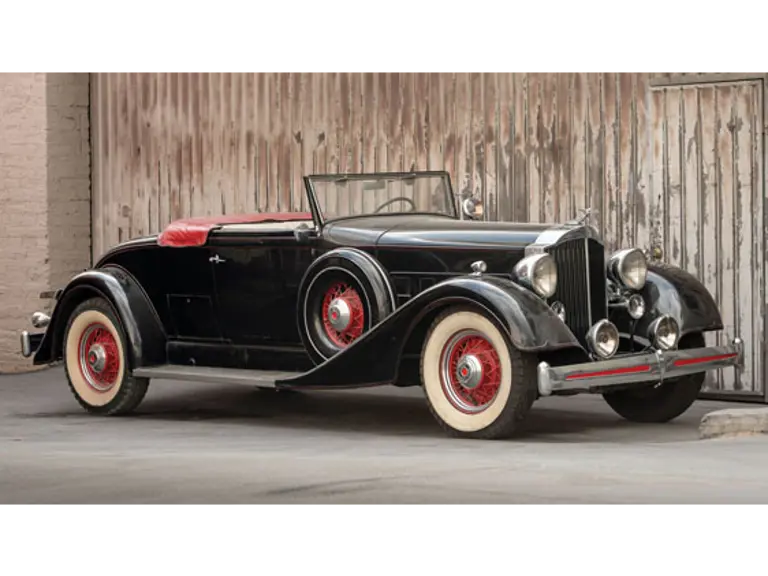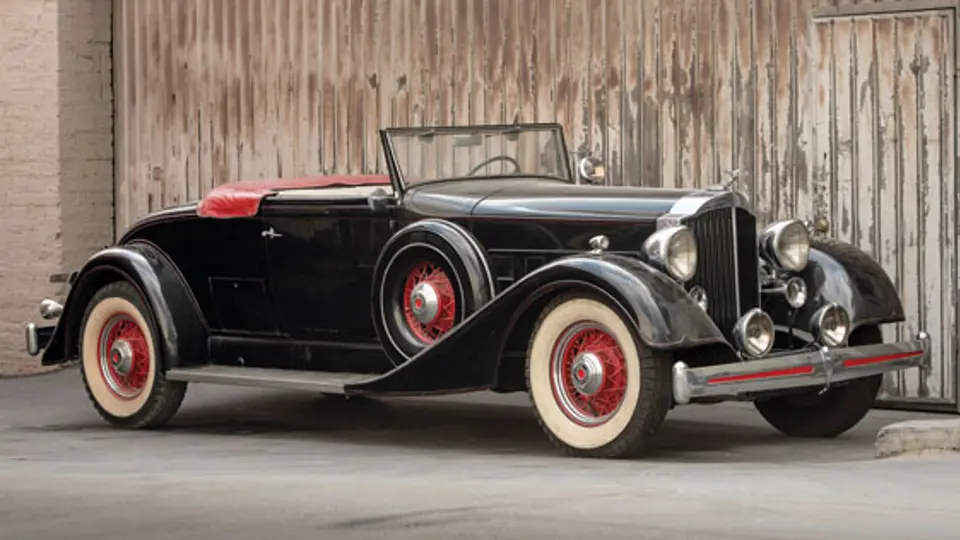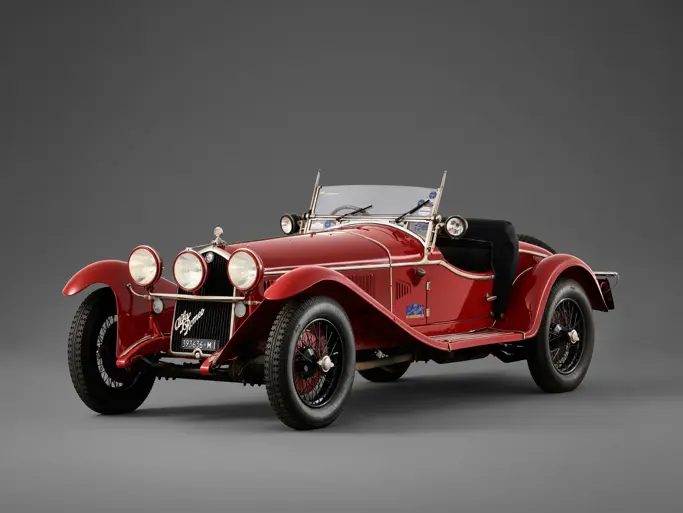Nineteen thirty-four Packards are highly-sought-after by collectors today due to their advanced engineering and representation of the pinnacle of classic-era automotive design with flowing fenders, vee-shaped radiators and low-profiled beltlines.
The 1934 Packard line was advertised as “The yardstick with which to measure all fine car values.” The new for 1934 Packard was designed to be the standard of value in judging all fine cars; American or European. The past three years had seen a revolution of change in automotive values. Engineers had taken the depression years as a challenge and had “accomplished miracles of improvement.” The progress of a normal decade was said to have been compressed into three “hard times” years. Packard was solid in its commitment to the consumer getting the most for their money when stepping up to make an investment in a car during an era of dramatic financial instability.
Packard challenged the customer to experience the power and styling of their new cars and then match these findings to any other car on the market – on either side of the Atlantic. Along with being bedazzled by what you got from Packard for your hard-earned dollars, Packard commented that “five years from now your Packard will still give you peak performance and will still be smart – for the lines of a Packard never wear out.” How many decades were they off in this assessment? This body style is widely appreciated and considered more beautiful in its execution now than ever before. “Drive it. Dare other fine cars to match it. Do this and we’ll leave it to you which car you’ll want to own. We believe it will be a Packard.”
This Eleventh Series Packard “Standard” Eight carries a factory-built Packard body number 719 which was referred to as a Coupe Roadster denoting its convertible top and rollup windows. A very stylish and popular body style, it is attractive in its understated elegance. Its body tag shows that it was delivered to Bowyer Motor Co. in Tucson, Arizona and although the overall presentation has the patina of age, this demonstrates an appearance of when the Packard was not long off the showroom floor and used as the “real” car it was meant to be in the 1930s.
The Packard has a black exterior finish with a white and red two-tone interior. It is powered by the straight eight, 319.2 cubic inch, 120 horsepower engine that is matched to a three-speed manual transmission with a floor-shift gear lever. The standard eight was offered as the 1100 (129-.5-inch wheelbase), 1101 (136.25-inch wheelbase) and 1102 (141.5-inch wheelbase). Unfortunately we have not been apprised of the wheelbase associated with this particular car. Among the equipment that contributes to the special nature of this automobile are dual sidemounts with covers, radiator mascot, driving lights, dual mirrors ($16 per pair option in period), rumbleseat, wire wheels, driver’s side spotlight, dual windshield wipers, luggage rack, golf club door and storage compartment and whitewall tires.
This Packard Eight Coupe Roadster belonged to a collector in Arizona whom had a passion for early American classics and, as with most of us, was an avid enthusiast. Unfortunately, due to health issues that led to his passing, his cars laid in a “mothballed” inactive state for many years. This recent “desert garage find” revealed collector cars that have been sitting in a dry, enclosed storage building that left them unexposed to the elements, and left the Packard with great structural integrity. This example is characterized by both a solid body that appears to exhibit dry, original wood, along with a tidy and sound chassis.
All of this gentleman’s automobiles appear to have had restorations many years ago; however, the exact timeframe is unknown. It is thought that the time of restoration goes back to the innocent period when the cars were just looked upon as “old cars” and not the rolling “works of art” that the cars have evolved into. It was natural to just enjoy and regularly drive the cars because the funding needed to do so was relatively inconsequential, especially compared to these modern times. Making the car perfect and to exacting factory specifications were not the primary concerns in the era, simply because few cared enough about the cars to preserve them in any manner. Just the fact that so many cars survived and have gone on to be restored back to their original glory, shows the foresight of the earlier generation that cared enough about the impressiveness of the machines to save them for the future and the rearview wisdom gained about restorations as the cars’ prices escalated.
All the cars, this one included, were removed from the longterm storage den and were transported to Tired Iron Works in Monrovia, California. Shop proprietor Chris Kidd, has gotten the Packard to start; however, the car does not run unassisted for very long. The next dedicated owner will have to have the entirety of the Packard’s mechanical systems “gone through” before it will be fit for road use. There remains the wonderful opportunity of choice in deciding whether they may wish to execute a complete restoration on this very solid platform or refresh it to the status of a running preservation or driver-type vehicle. Either decision can be justified and sound in choosing.
Eleventh Series Packards are among the most sought-after automobiles of the Classic Era today. This rare Coupe Roadster has many desirable features and is sure to please its next owner. This represents a singular opportunity to acquire a CCCA Full Classic that can be readied for extensive touring or fully restored to perfection. Either way the new owner will gain from the simple enjoyment of just having it in their carriage house.
Ask the man who owns one.



 | Santa Monica, California
| Santa Monica, California


